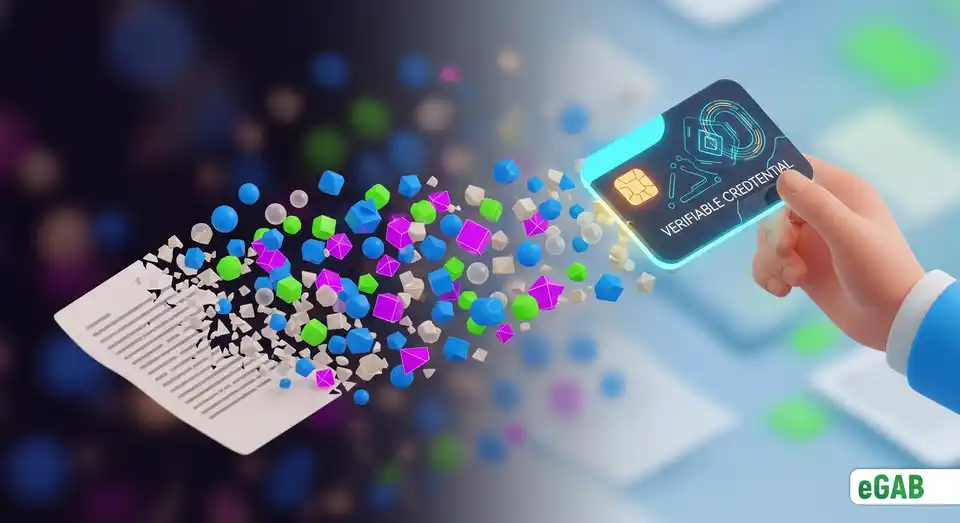The Problems with Paper Documents: A Complete Guide
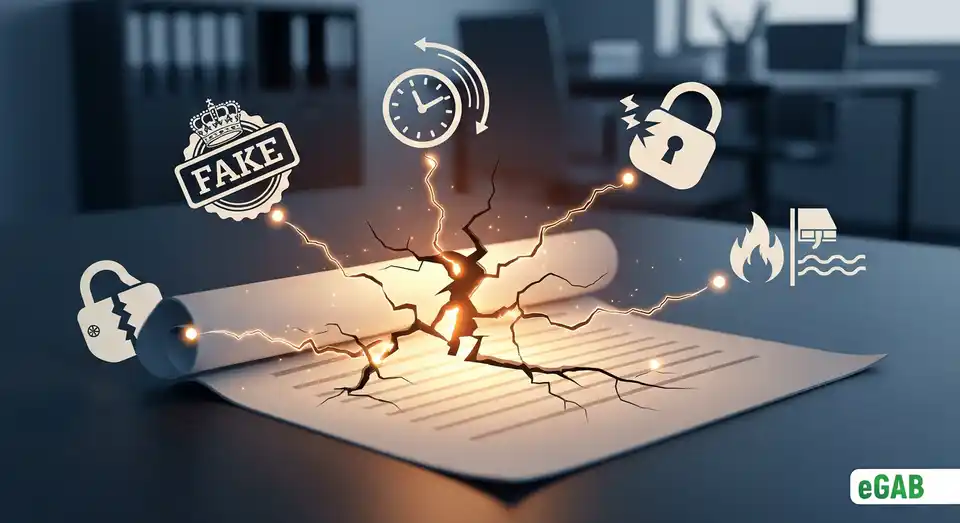
 Author:
Artem Grigoriev
Author:
Artem Grigoriev
- Vulnerability to Forgery and Counterfeiting
- Challenges in Authenticity Verification
- Inconvenience of Physical Storage and Presentation
- High Costs and Economic Inefficiency
- Susceptibility to Damage and Permanent Loss
- Massive Productivity Loss and Wasted Time
- Excessive Storage Costs and Space Demands
- Significant Security Vulnerabilities and Data Risks
- Barriers to Collaboration and Remote Accessibility
- Severe Environmental Impact
- Inconsistent Filing and Organizational Chaos
- Complex Compliance and Legal Challenges
- Workflow Disruptions and Integration Issues
- Why Not All Digital Documents Are Created Equal
- The Rise of Verifiable Digital Credentials: A Modern Solution
- The eGAB Ecosystem: A Comprehensive Solution
- How to Transition to Secure Digital Credentials
- Summary: Why the Future Isn't Written on Paper
Think about your most important paper document-your diploma, a property deed, a critical business contract. For generations, we've been taught to see paper as a symbol of trust and permanence. But what if that's a dangerous myth? In today's digital world, that document is your biggest vulnerability. The truth is, that physical piece of paper is fragile, surprisingly insecure, and an incredibly inefficient way to manage your most critical information.
This isn't just about the risk of a fire or a misplaced file. The fundamental problems with paper documents create a chain reaction of hidden risks that silently drain your resources and expose you to very modern threats. We're talking about sophisticated forgery , crippling workflow disruptions , massive security vulnerabilities , and complex legal challenges . Your reliance on paper is a systemic flaw that costs far more than you realize. This guide will break down every one of these critical issues, exposing the true financial, security, and productivity costs of sticking with an analog system. Then, we'll make a clear case for a more secure, modern solution.
Vulnerability to Forgery and Counterfeiting
That official-looking certificate on the wall? We're all taught to trust it. But in a world with high-res scanners and Photoshop, that trust has become a dangerous liability. Security features like watermarks are no longer a reliable defense against modern forgers who use everything from chemical washing to AI-driven deepfakes. What's truly shocking is just how easily convincing fakes can be created from scratch. Curious how they pull it off? We dissect the anatomy of a modern fake document and expose the forger's entire toolkit.
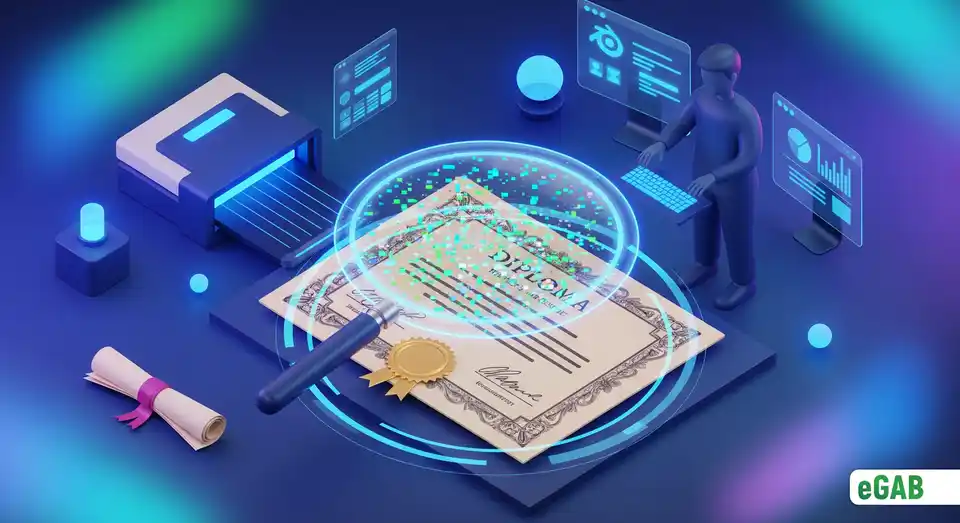
Challenges in Authenticity Verification
Ever tried to use your degree in another country? You're instantly thrown into a bureaucratic nightmare. Verifying a paper document across borders is a painfully slow and expensive process that often takes months. It relies on international mail that can take 3–4 weeks, followed by evaluation services with backlogs stretching up to 16 weeks. This inefficiency isn't just an inconvenience; it fuels a massive $22 billion counterfeit degree market . When 75% of university staff admit they can't confidently spot a fake, you know the entire system is built on a foundation of doubt. It's a broken process, and we break down why international verification is failing and how to fix it.
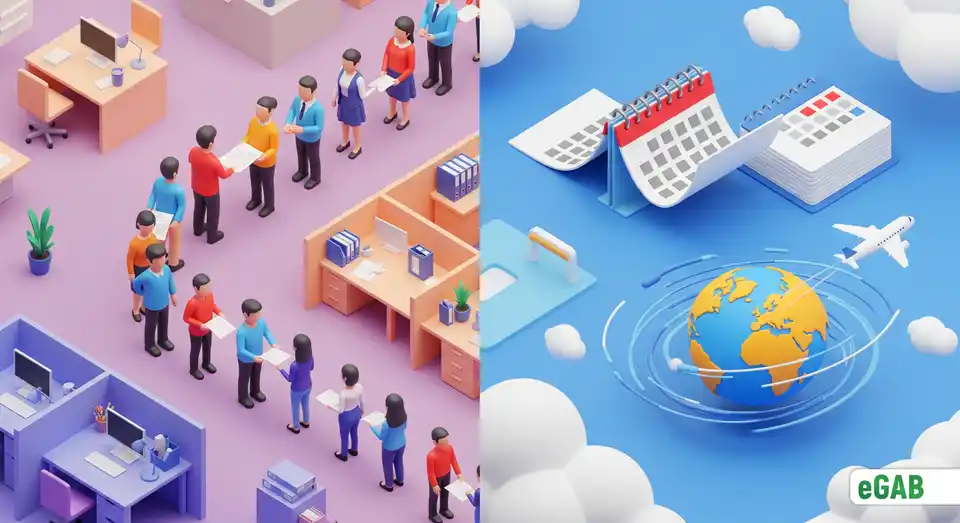
Inconvenience of Physical Storage and Presentation
Ever needed an original document right now , only to find it locked away in a filing cabinet? That's the daily friction of paper. You're constantly juggling the risk of fire or water damage with the high costs of couriers and notarization just to share a single file. Every document you send is a gamble against loss or delay, grinding your workflow to a halt. This reliance on physical storage is more than an inconvenience-it’s a critical flaw. We explore the hidden risks lurking in your filing cabinet and show you how to build a truly secure system.
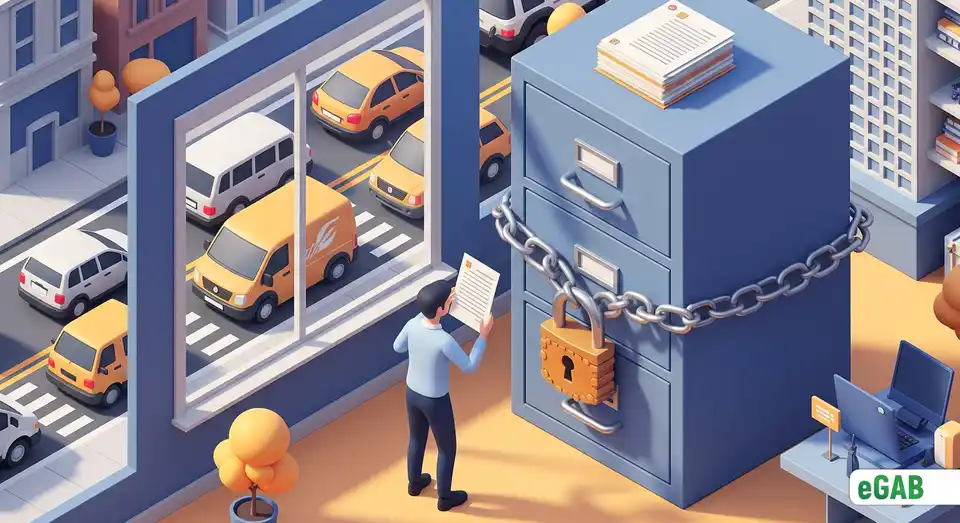
High Costs and Economic Inefficiency
Ever look at a filing cabinet and just see office furniture? In reality, you're staring at a financial black hole. The obvious costs of paper, ink, and printing are just the tip of the iceberg. The real damage comes from the hidden expenses that quietly bleed your budget dry. Think about the expensive office space your archives consume, or the shocking amount of employee time wasted on filing, searching, and replacing lost documents. It all adds up. In fact, these paper-based processes can eat up as much as 15% of a company's total revenue . We break down every hidden expense in your document workflow to show you the true cost.
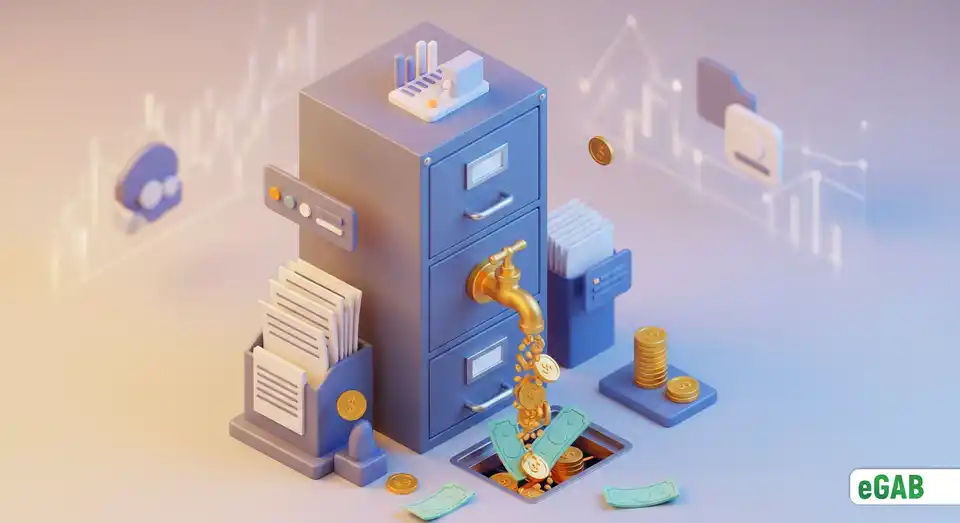
Susceptibility to Damage and Permanent Loss
That shoebox of vital records you're holding onto? It’s just one disaster away from becoming a bureaucratic nightmare. Paper is incredibly fragile-a burst pipe or a small fire can instantly destroy your most critical documents. And this isn't some rare threat. FEMA estimates that up to 60% of small businesses never reopen after a disaster, mostly because of catastrophic document loss. The fundamental problem is that a paper document is a single point of failure . When it's gone, it's gone for good. But what if you could make your information invincible? It all comes down to a smart, multi-layered defense. We’ll show you how to build a truly disaster-proof document strategy using both physical and digital safeguards.
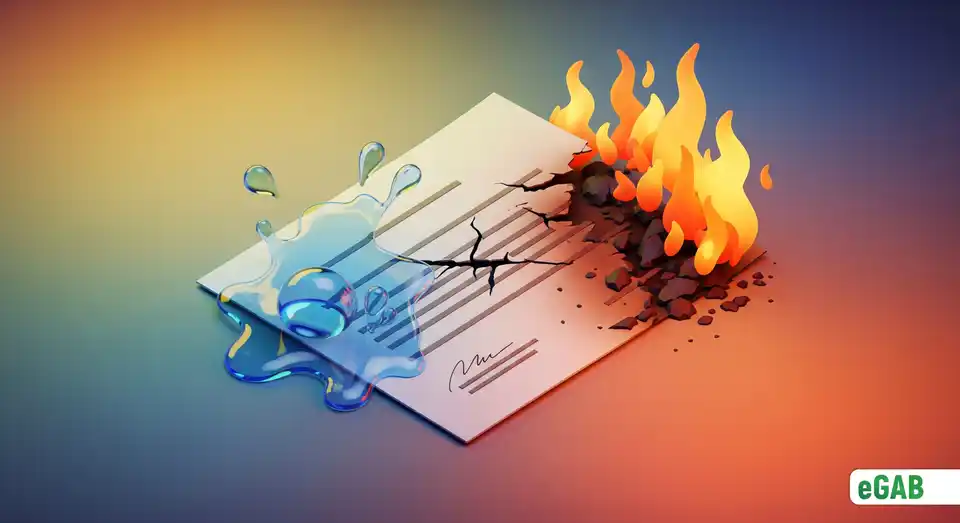
Massive Productivity Loss and Wasted Time
What if one of your biggest expenses wasn't even on your budget? It's the silent, compounding hours your team wastes just hunting for paper. This daily search isn't a minor frustration-it's a productivity black hole that slashes overall productivity by a staggering 21%. Professionals spend up to 2 hours every single day just looking for documents, and a single misfiled paper can cost over $120 to find. So, what's the total financial drain on your business? We analyze how much time employees truly waste on paperwork and reveal all the hidden costs.
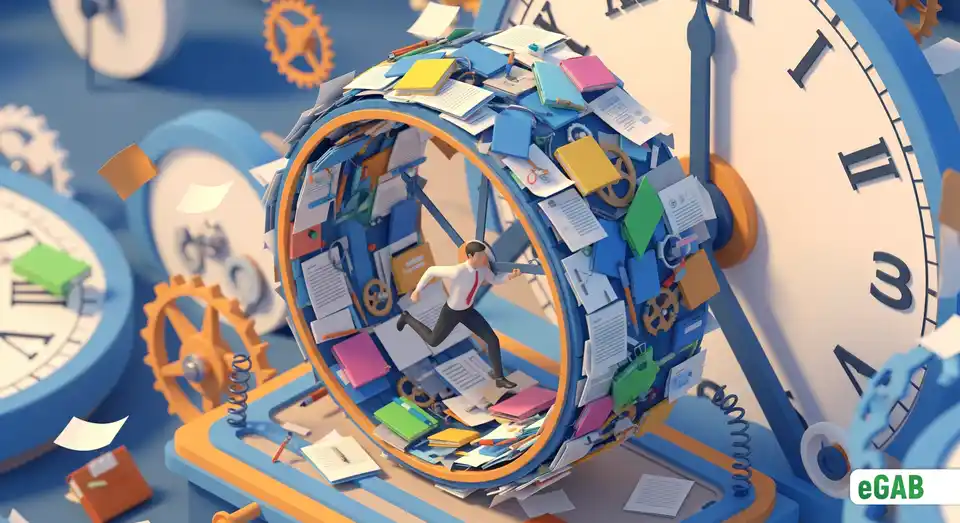
Excessive Storage Costs and Space Demands
Those filing cabinets lining your office walls aren't just furniture-they're expensive real estate. A single cabinet can easily eat up 15 square feet of usable floor space, costing you over $577 annually in rent alone. You're essentially paying to warehouse paper instead of empowering your team. While off-site storage might seem cheaper, the hidden retrieval fees and productivity-killing delays add up fast. This doesn't even count the constant spending on supplies or the thousands you lose in employee time spent searching for files. Curious about the total financial drain? We'll show you how to calculate the true cost of your document storage and build a powerful case for reclaiming that space.
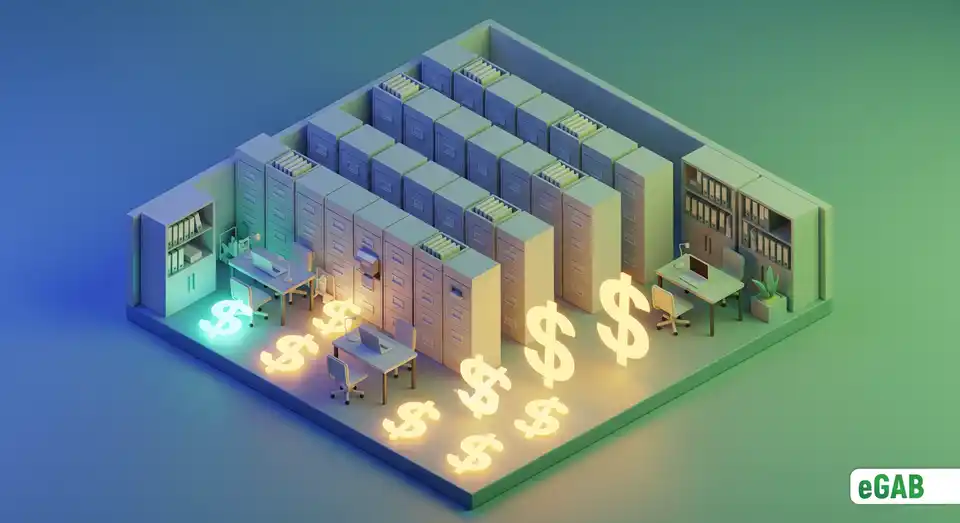
Significant Security Vulnerabilities and Data Risks
You spend a fortune on firewalls, but what about that confidential report sitting right on a desk? Paper documents are a huge security blind spot . A single misplaced file can lead to a devastating data breach, whether from simple human error, accidental exposure, or even deliberate industrial espionage. Unlike digital files, paper leaves no audit trail, making it impossible to track who accessed it and when. This oversight is a compliance nightmare under laws like GDPR, putting you at risk for massive fines and serious reputational damage. Ready to look beyond the shredder? We uncover the five critical data security risks of paper documents that every business needs to know.
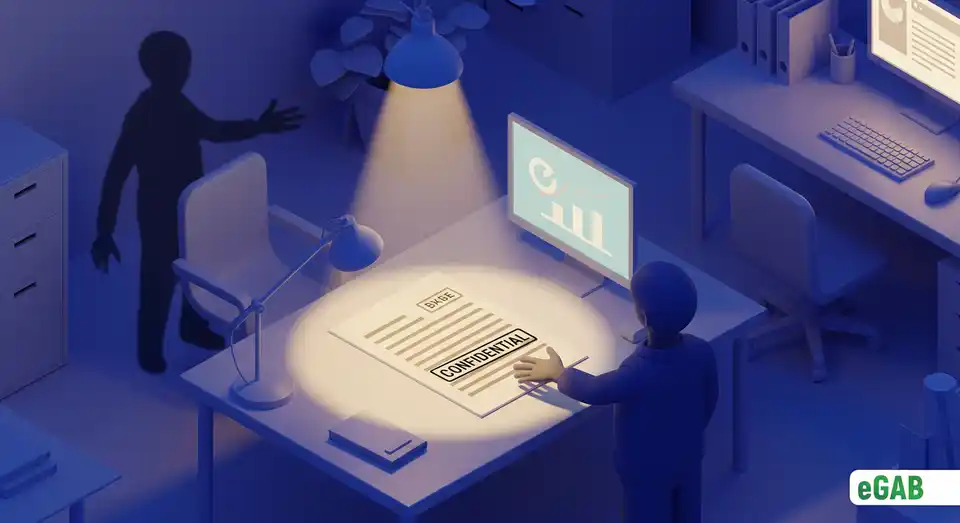
Barriers to Collaboration and Remote Accessibility
Have you ever equipped your remote team with the best digital tools, only to watch a project grind to a halt while you wait for a physical signature? That's the frustrating reality of running a digital-first team on an analog foundation . The problem is simple: a physical document can only be in one place at a time, making simultaneous collaboration impossible for your distributed workforce. This single limitation creates frustrating bottlenecks, version control chaos, and serious security risks as insecure scans get emailed back and forth. This old-school system is actively killing your team's agility, and we break down exactly how a paper-based office fails your remote team and reveal the hidden costs you can't afford to ignore.
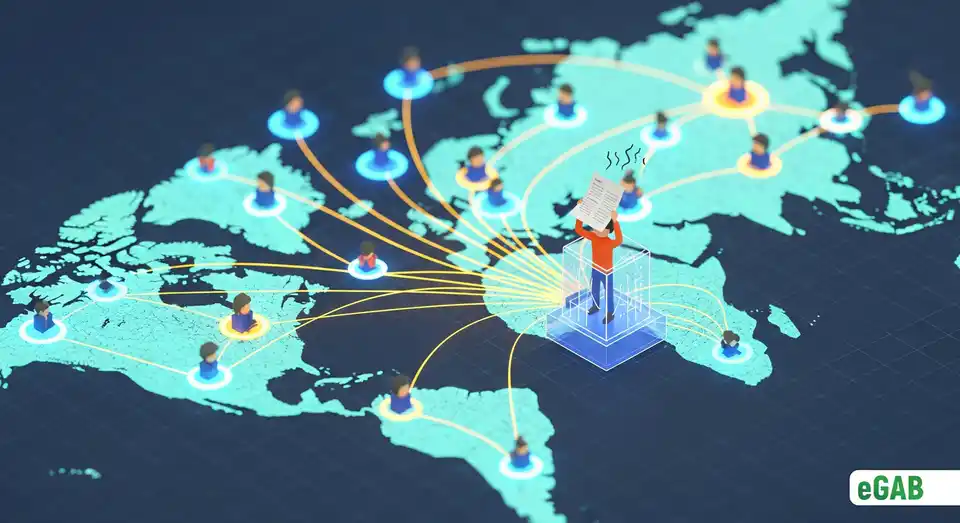
Severe Environmental Impact
That single piece of paper tells a surprisingly heavy environmental story. Its journey starts with deforestation , as the paper industry uses a shocking 42% of all industrially harvested wood. The manufacturing process is just as damaging-it takes about 10 liters of water to produce a single A4 sheet. And where does it often end up? In a landfill, where it decomposes and releases methane, a greenhouse gas over 27 times more powerful than CO₂. And that's just the beginning. Want to see the full picture? We've analyzed the complete environmental footprint of a paper document in our 2025 report.

Inconsistent Filing and Organizational Chaos
You've been there: frantically digging through messy cabinets for a document you know is in there somewhere. This daily scavenger hunt isn't just an annoyance; it’s a symptom of total organizational chaos . When 7.5% of all paper documents get lost and another 3% are misfiled, the financial drain is staggering. This chaos comes down to human error and a lack of standard rules. But you can fix it. Ready to build a system that actually works? Our practical guide shows you how to go from chaos to clarity and create a perfectly organized archive.
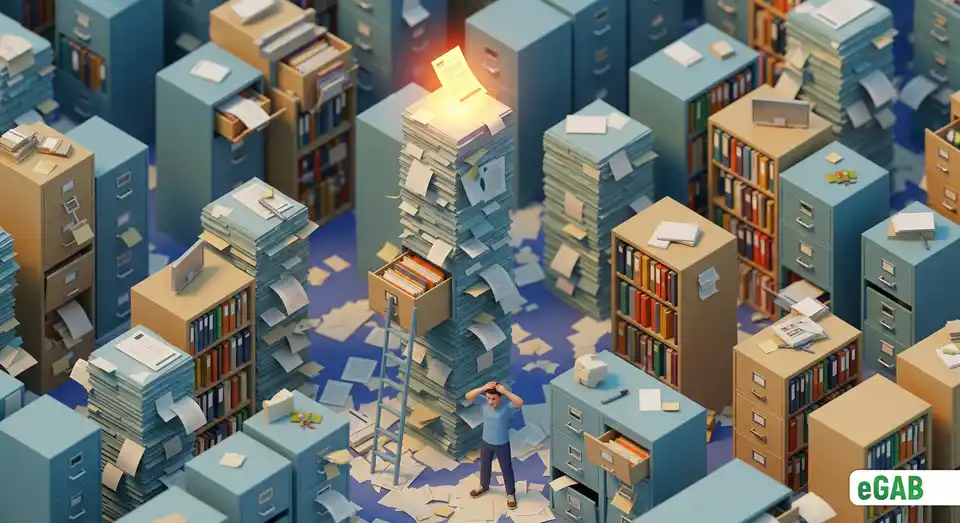
Complex Compliance and Legal Challenges
Have you ever tried to find one specific document for a legal request? With paper, it's a frantic scavenger hunt. Now, imagine regulations like GDPR or HIPAA demanding you prove you’ve deleted every single copy of a client's data. How can you be sure you did? Paper archives make following strict data retention schedules and providing a clear audit trail nearly impossible. You're forced to walk a tightrope between illegally keeping data for too long and shredding it too soon. This manual process isn't just inefficient; it's a huge legal risk. In fact, your paper archives could be a ticking legal time bomb just waiting to go off during an audit.
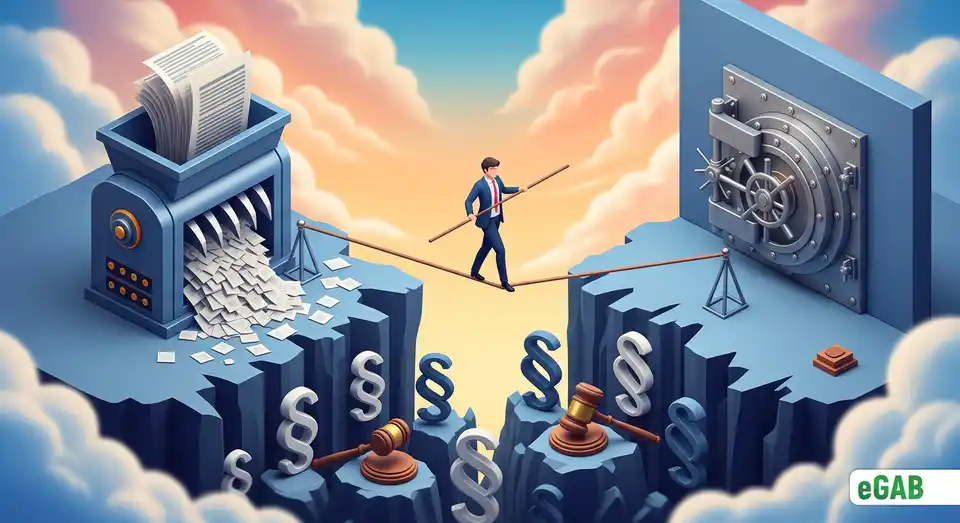
Workflow Disruptions and Integration Issues
Have you ever invested in powerful software, only to feel like your business is still stuck in slow motion? The culprit is often hiding in plain sight: paper. Physical documents are the ultimate bottleneck in any modern digital workflow. They create frustrating approval delays as they get physically shuffled from desk to desk, and they force your team into slow, error-prone manual data entry. Worst of all, paper is completely incompatible with the automated systems you rely on to run your company, creating frustrating data silos. Find out how these legacy paper processes are killing your business automation and holding back your investments.
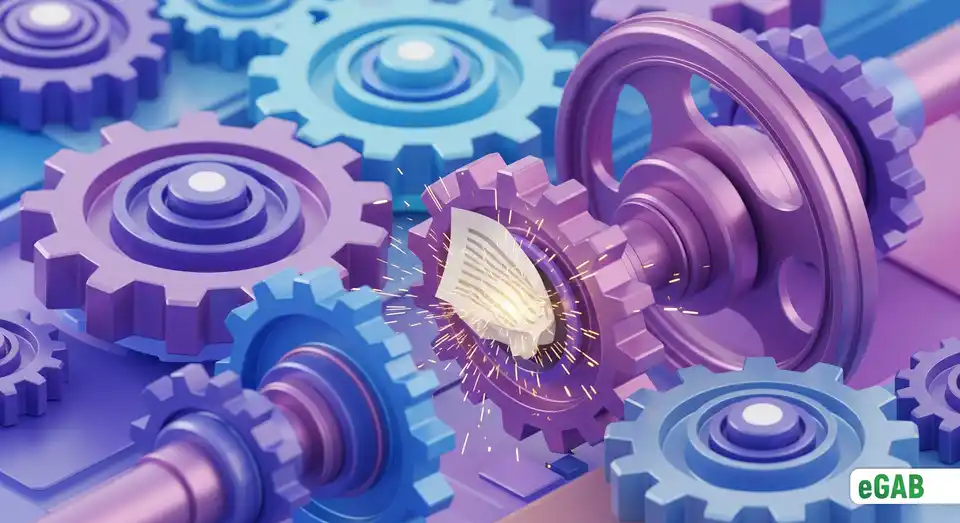
Why Not All Digital Documents Are Created Equal
So, you think the answer is to just "go digital," right? Not so fast. The digital world has its own set of traps, and choosing the wrong path can be just as risky as sticking with paper. That digitally signed PDF, for instance, might feel secure, but it’s surprisingly vulnerable. We show you exactly why a PDF diploma is a forger's playground. And what about minting NFTs on a public marketplace? While that's great for art, it’s a strategy loaded with costs and privacy risks, which makes it the wrong tool for academic credentials. Even building an in-house portal seems smart at first, but it creates a trust paradox. We explore why this is a costly mistake that fails on a global scale.
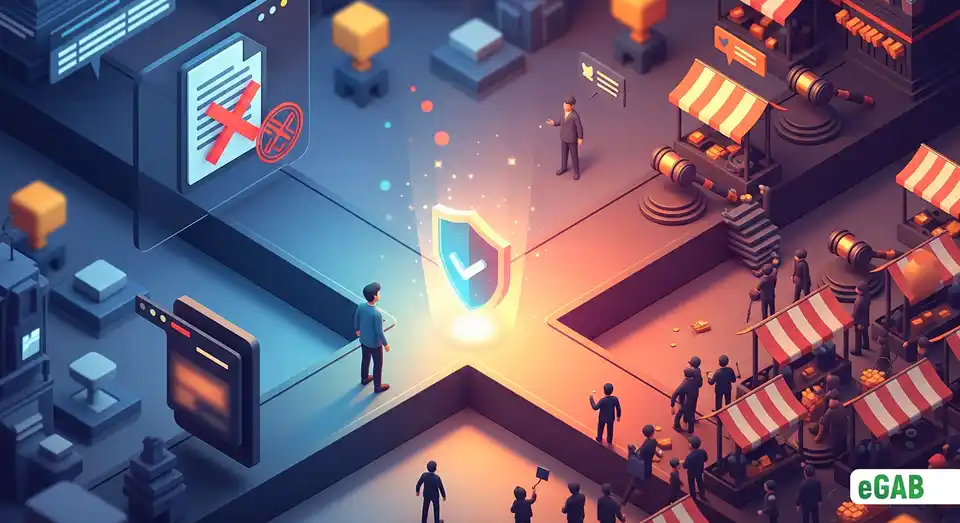
The Rise of Verifiable Digital Credentials: A Modern Solution
After seeing all the flaws in paper, you might think scanning everything is the solution. But a simple PDF is just as vulnerable to fraud. The real answer is a new kind of digital asset: a verifiable document . This isn't just another file; it's a cryptographically secure record that's fundamentally tamper-proof. Each one has a unique digital fingerprint that mathematically proves it came from a legitimate source and hasn't been altered. This technology is a huge leap forward, but what exactly are verifiable credentials, and how do they build the future of trust?
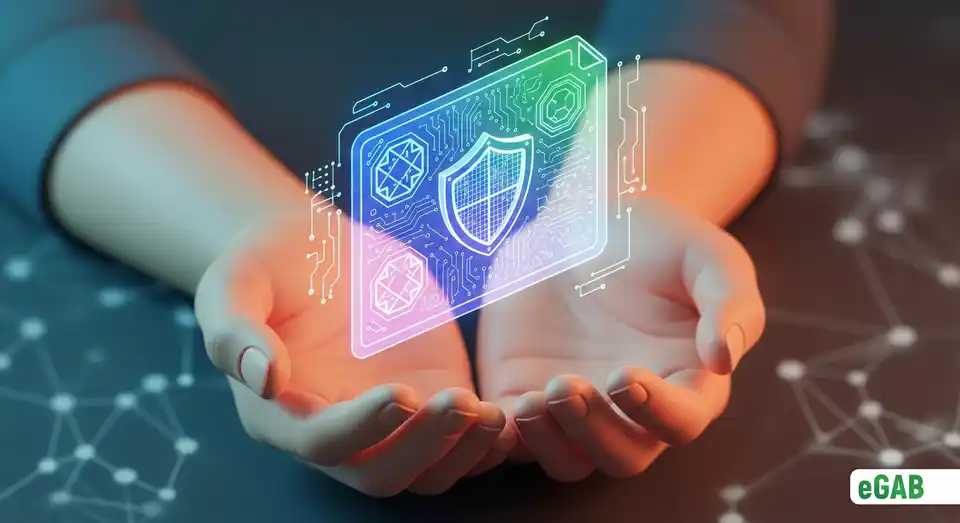
The eGAB Ecosystem: A Comprehensive Solution
So, how do we fix a system built on vulnerable paper and easily faked PDFs? The answer isn't just one technology, but a complete ecosystem. Enter the eGAB (Global Academic Blockchain) . It tackles fraud and inefficiency head-on by combining four critical components. At its core is the CREST Chain , a blockchain designed specifically for academic records, making it hyper-efficient and secure. But technology alone isn't enough. That's why eGAB integrates a Trusted Third Party (TTP) for instant verification and a Certification Authority (CA) to ensure only legitimate institutions can issue credentials. This creates a tamper-proof, globally trusted network. Curious about how these pieces fit together? We break down the entire eGAB ecosystem in this simple guide.
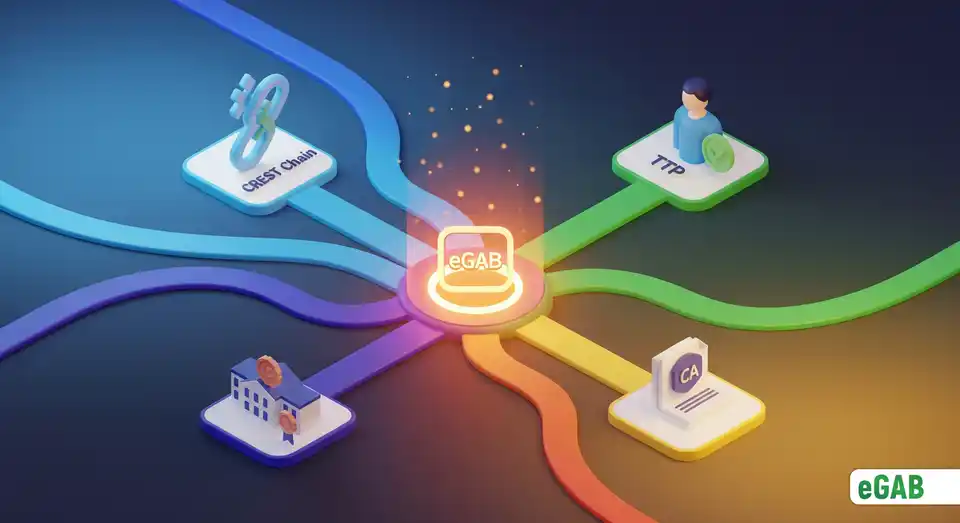
How to Transition to Secure Digital Credentials
Ready to leave the risks of paper documents behind? The switch to secure digital credentials is much easier than you think. There's no complex setup-just a few simple steps. First, register your institution to create your account. Once you're in, our Quick Start Guide will walk you through everything, from customizing your profile to issuing your first batch of NFTs. Get started today and we’ll give you 100 free credentials to launch your program.
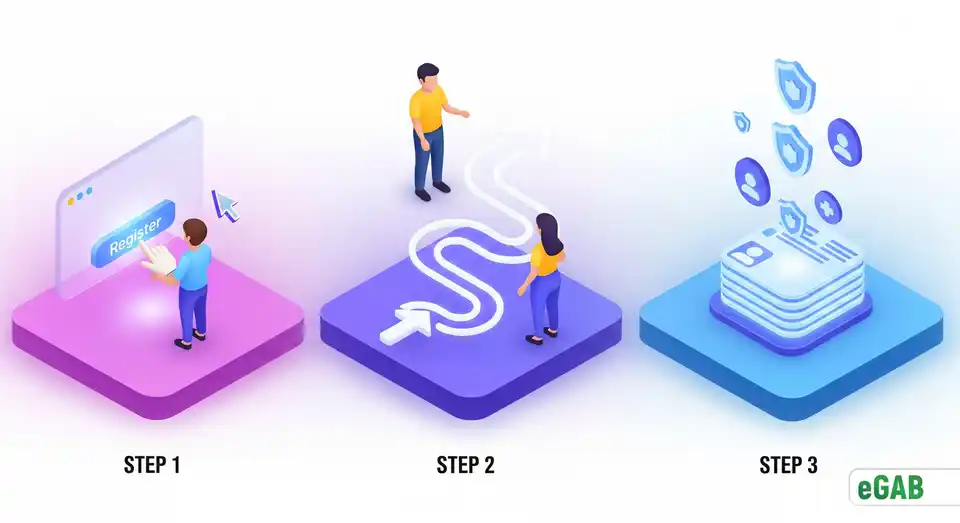
Summary: Why the Future Isn't Written on Paper
As we've seen, our reliance on paper documents isn't just outdated-it's a system packed with critical flaws. Paper creates a foundation of doubt and inefficiency, starting with its shocking vulnerability to modern forgery and the nearly impossible task of secure authenticity verification . The problems just pile up from there. You're left with a massive financial drain from hidden storage costs , a staggering productivity loss as your team wastes countless hours searching for files, and the constant threat of permanent loss from a simple fire or flood. What's more, physical documents are the ultimate bottleneck. They sabotage remote collaboration and create huge security vulnerabilities , making compliance with regulations like GDPR a logistical nightmare.
But be warned: simply "going digital" with insecure formats like PDFs isn't the answer. The same goes for misguided strategies like using public NFT platforms for credentials. That's just trading one set of problems for another. The real solution is a complete shift in thinking toward verifiable digital credentials . This is precisely where the eGAB ecosystem delivers a powerful, all-in-one solution. By combining a purpose-built blockchain with a Trusted Third Party and a strict Certification Authority, the system directly tackles every single weakness of paper. It replaces forgery risks with cryptographic certainty. It transforms month-long verification processes into instant validation. And it swaps costly physical storage for a secure, efficient digital framework. Ultimately, moving beyond paper isn't just about convenience. It’s about building a future based on verifiable trust, security, and efficiency.
